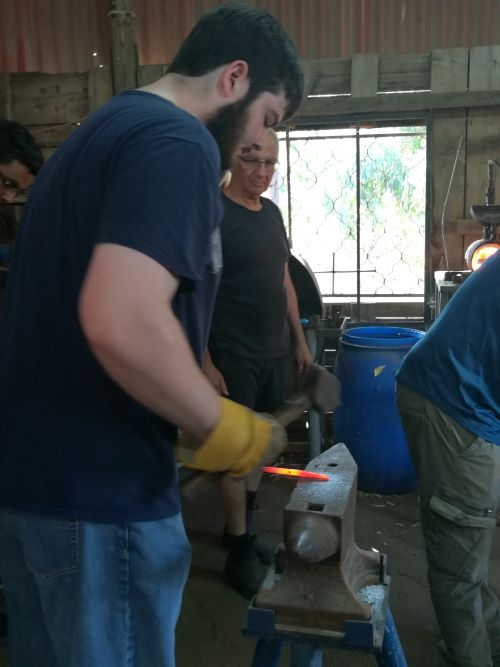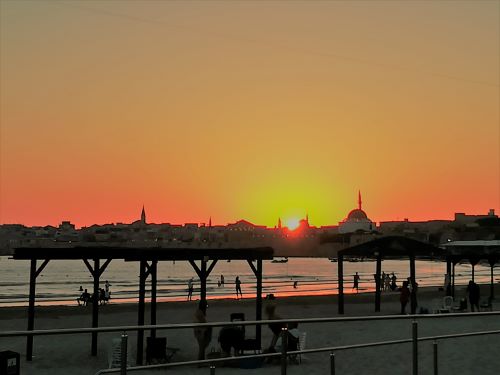The Art of Smithing in Israel
About Blacksmithing
The art of blacksmithing is no longer as common as it used to be. Just about everyone knows that the modernization of industry and production vastly undercut the need for a local blacksmith in a given community. Despite this, however, it persists as a hobby, art form, and occasional career all over the world. I am myself an apprentice blacksmith, though I usually focus on blade-smithing. It is a small distinction, but an important one since it reflects on the materials, techniques, and other factors in a given smithy. But I do have some experience as a blacksmith, and it is those experiences that I drew upon last week when the Archaeometallurgy students, alongside a few professors, visited a local forge here in Israel.
The Forge
The forge was almost a community unto itself. One side of the courtyard held the forge, another held a leather-working shop. Other buildings were scattered about, but the forge was close to the center. We met the resident blacksmith and his son, and they taught us a bit about being craftsmen in Israel in the modern era. Just like in the US, they said, it is far harder nowadays to live purely as an artisan. Instead, most of their income comes from construction or the teaching of classes around the country. After this, we were allowed to enter the forge. As you can see by the picture, this was a pretty packed space. Two separate forges, one coke burning and the other propane, were present beside a number of anvils, belt grinders, and drill presses. As a group we learned how to make nails, saw how chains were produced, and even a small knife was made in front of us.
The Reality
As it turns out, forges in the US, at least the ones I have been to, are not so different than the one we visited. They may be larger, or have different tools, but the underlying atmosphere is much the same. In the end, it wasn’t all that different from the forge near my own home in Virginia. Despite the language and cultural barriers that separated us, I felt like I already knew the man teaching us, at least partly. Not to use a cliche, but experiencing something so familiar in a new environment reminded me how similar people are, no matter where you are. Plus, hitting hot metal with a hammer is always satisfying.

